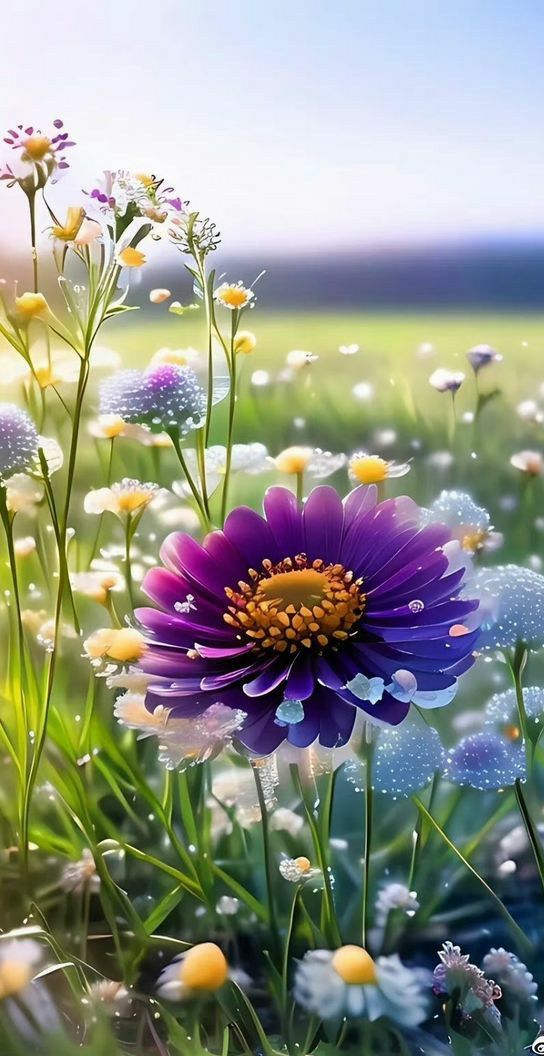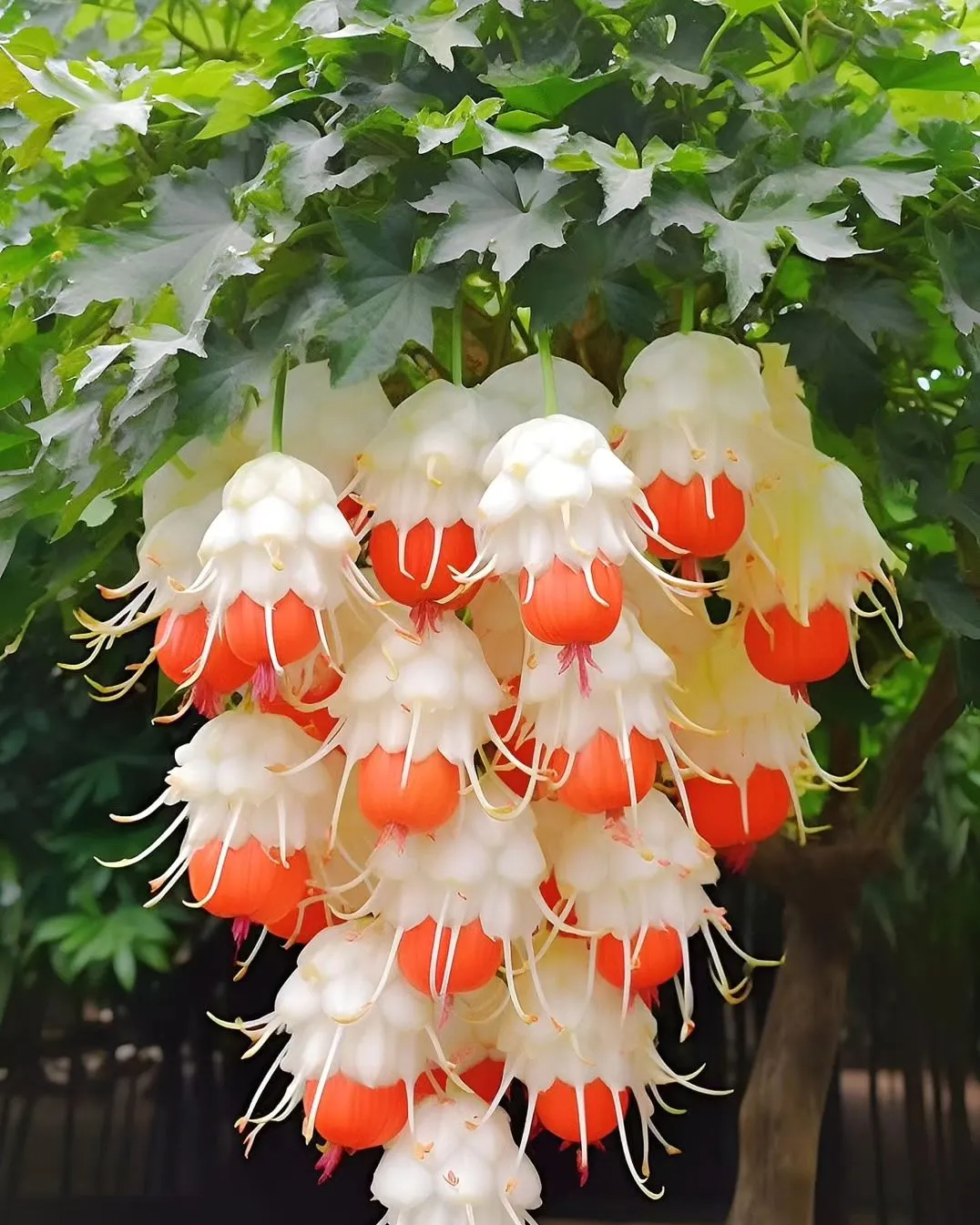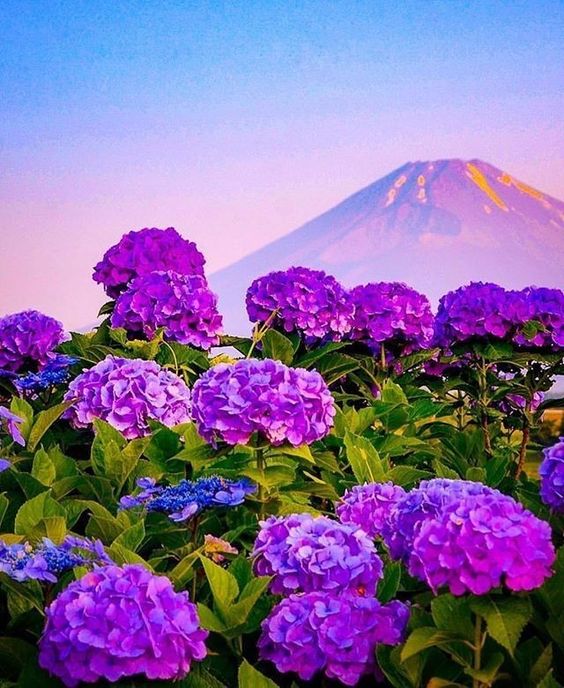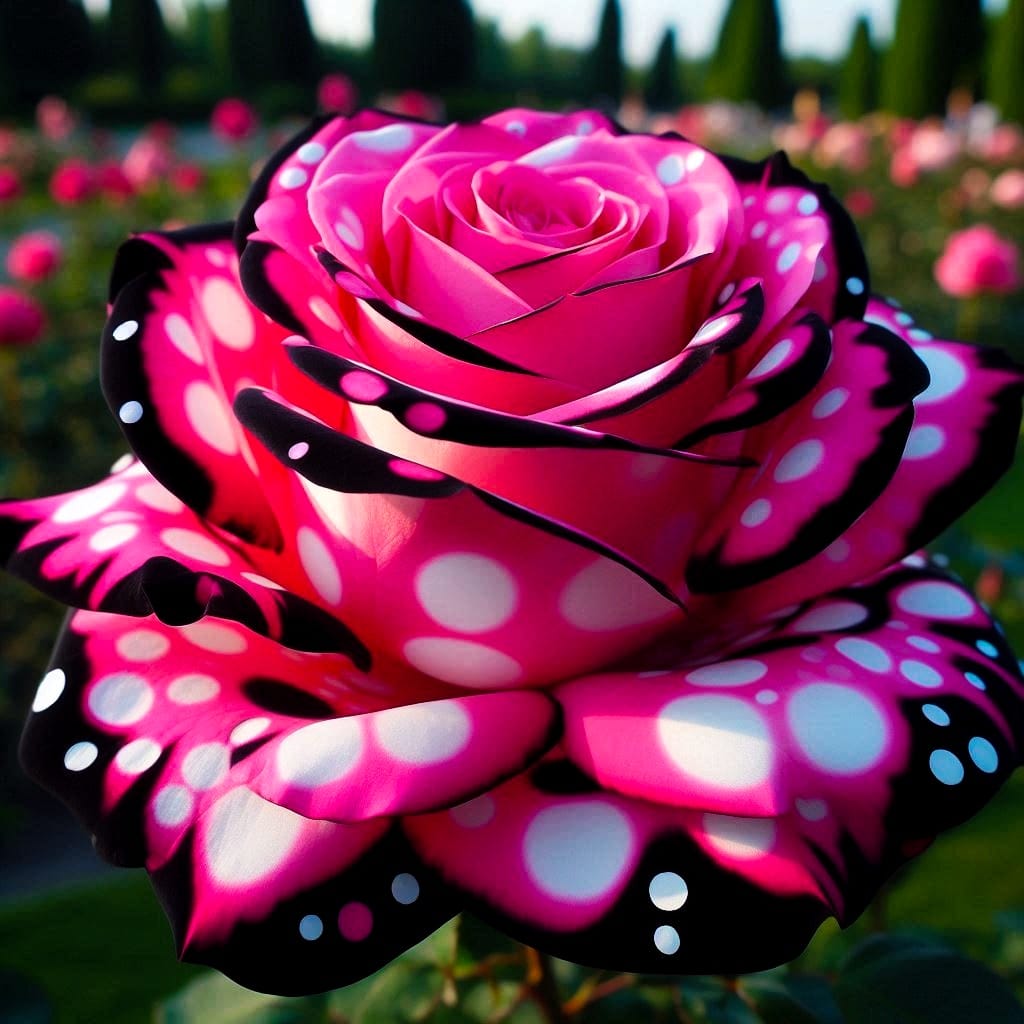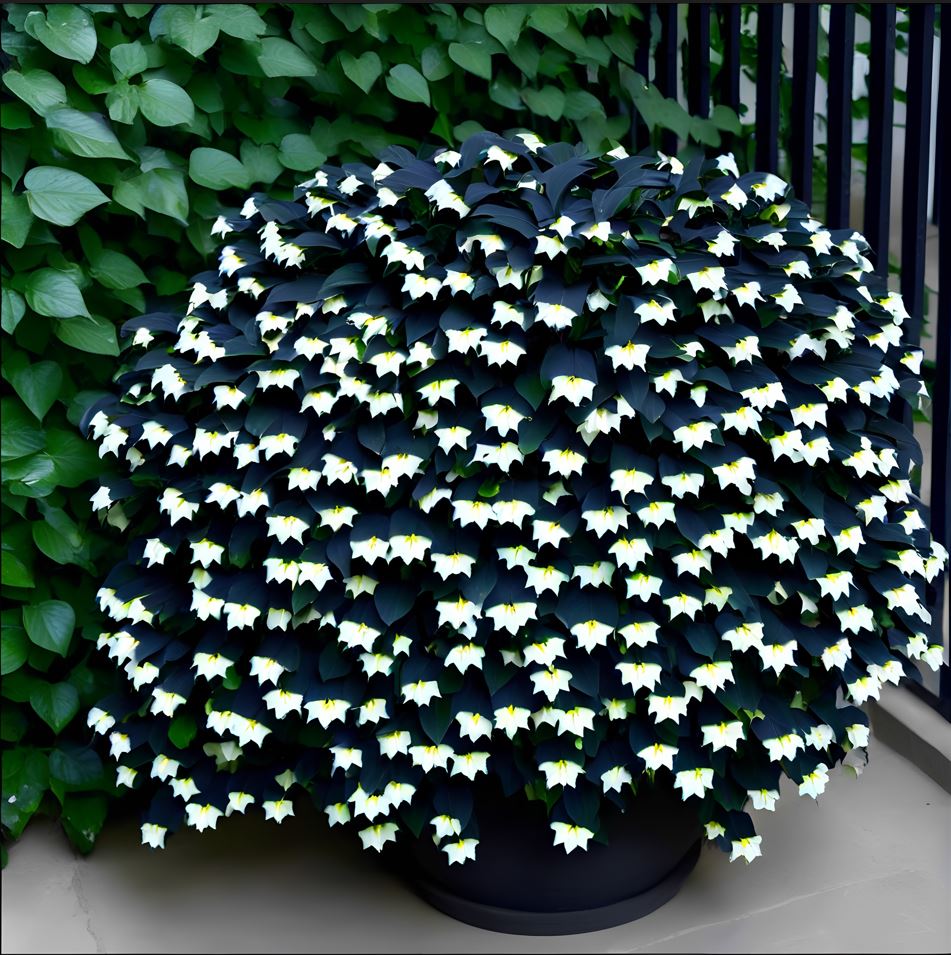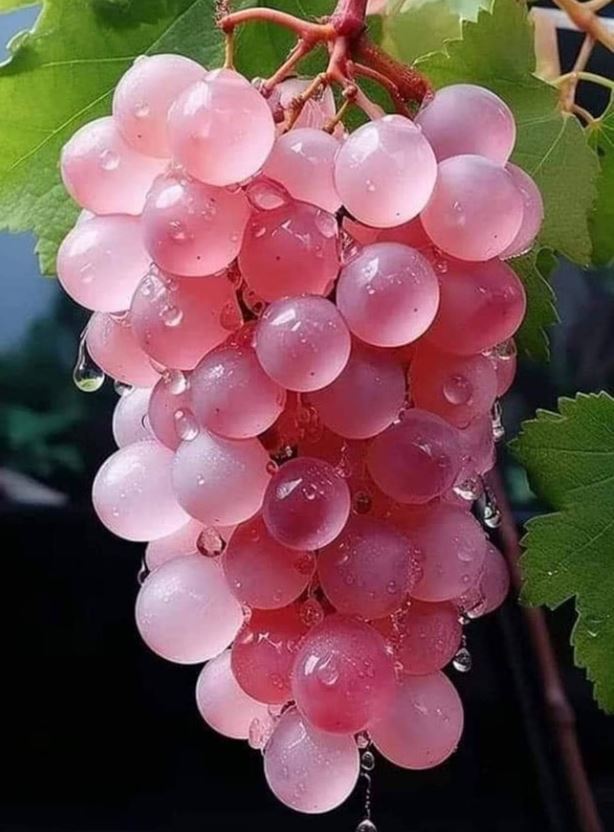1. ‘Hidcote’ English Lavender (Lavandula Angustifolia ‘Hidcote’)
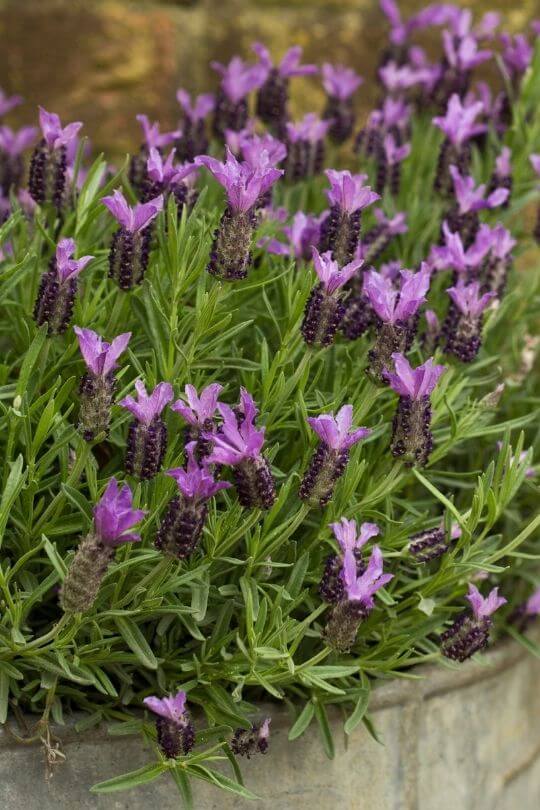
‘Hidcote’ is one of the most popular English lavender types in the world. It has long lasting blooms of dark purple flowers that have an unmistakable and very strong scent.
Unlike other types of lavender, however, it will bloom profusely but only once, from late spring into the early summer.
This is an outstanding plant, winner of the Award of Garden Merit of the Royal Horticultural Society, especially if you want to use it in borders or hedges, but also if you wish to cover slopes, or if you need so dark purple in your flower beds.
Excellent for all types of informal gardens (including city, courtyard and gravel gardens), ‘Hidcote’ lavender will also look and smell great in pots and containers.
2. ‘Alba Nana’ English Lavender (Lavandula Angustifolia ‘Alba Nana’)
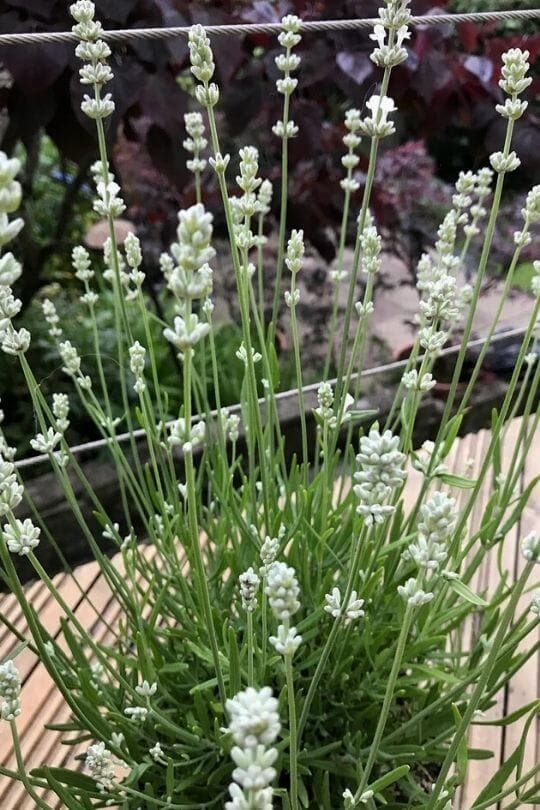
This “dwarf dawn” variety of English lavender (that’s what the name means) will mix its beautiful candid and white blooms with the most soothing scent in the world, and its diminutive size makes it perfect for containers and pots, patio gardens and terraces.
3. ‘Munstead’ English Lavender (Lavandula Angustifolia ‘Munstead’)

This variety of English lavender has “noble” origins when it comes to gardening, actually, royalty, as it was introduced in 1916 by Gertrude Jekill!
It is a variety of lavender with a compact habit and very well defines flowers with five clearly visible petals whose color is of a light rosy purple shade.
Of course, having heard the name of Gertrude Jekill you will think that this lavender variety is excellent for borders, and it is, but it will also suit rock gardens and herb gardens, which it will enrich with its relaxing aroma.
4. Pink English Lavender (Lavandula Angustifolia ‘Rosea’)
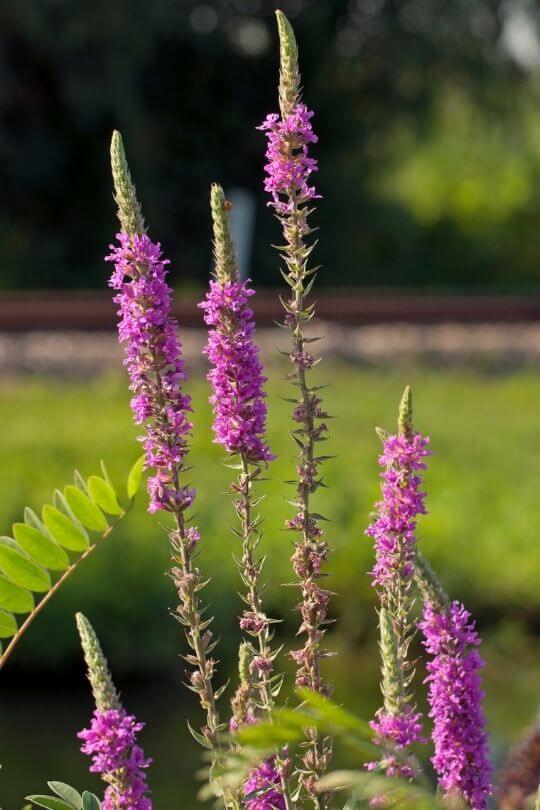
To the strong but calming fragrance of English lavender, this variety, ‘Rosea’ will add an abundance of pale pink (sometimes off white) flowers. It is, in fact, one of the most generous bloomers of the entire lavender genus.
This makes it perfect for romantic hedges and borders, in any type of informal garden.
5. ‘Thumbelina Leigh’ English Lavender (Lavandula Angustifolia ‘Thumbelina Leigh’)
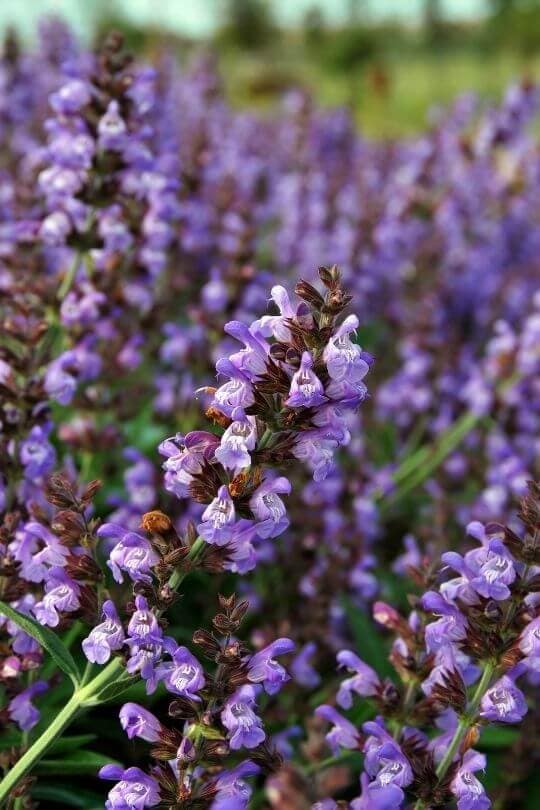
‘Thumbelina Leigh’ is a variety of English lavender with a particular gardening and visual value because the inflorescences are short and thick, made up of fewer flowers than other lavender types.
They will appear at the top of long stems, and will look like violet purple plump plumes high above the foliage.
This makes this lavender mora suitable to even less formal gardens than other types, as it will look less “wild”, and also for containers and flower beds where you wish the blooms to stand out.
6. ‘Folgate’ English Lavender (Lavandula Angustifolia ‘Folgate’)
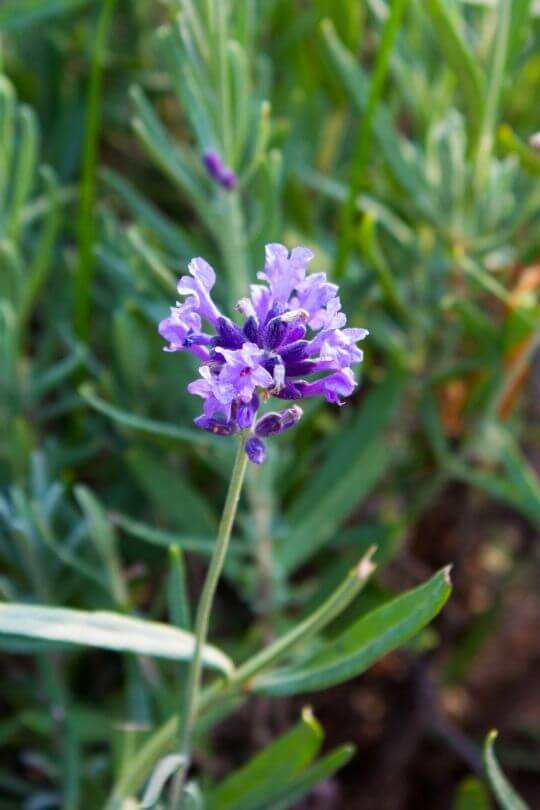
With classical dark purple flowers, this variety of lavender is well known for its generosity and the thick blooms it will produce in spring.
The inflorescences themselves are regular for an English lavender variety, but ‘Folgate’ will grow loads of them!
So, this is an excellent filler of color and scent to borders, hedges, and beds, and a plant you can safely rely upon to light up your garden with a richness of color that can make all the difference.
And that’s maybe why the Royal Horticultural Society gave it the Award of garden Merit in 2012
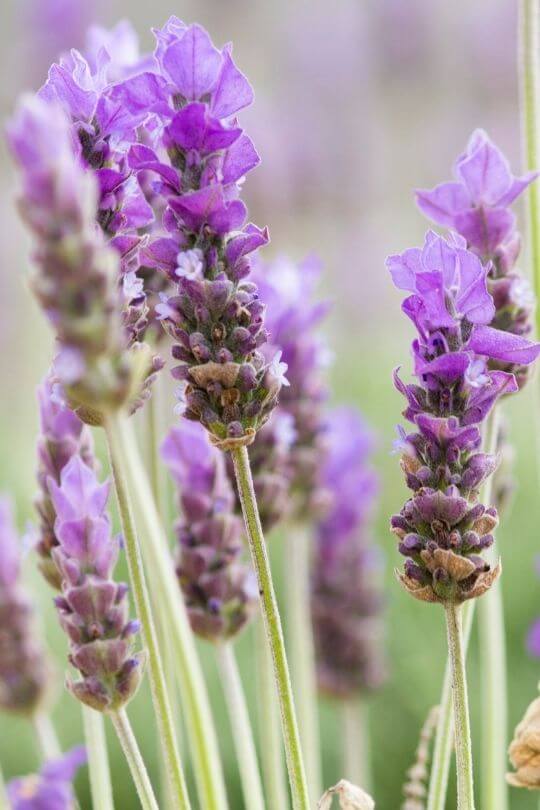
If you want a sweetly cheeky variety of English lavender, ‘Little Lottie’ is a bit “different” from her sisters because the flowers are of two colors: some are white and some light magenta, and they mix in the inflorescences, forming myriad combinations of purity and soft feelings.
This secured the Award of Garden Merit by the Royal Horticultural Society for ‘Little Lottie’ in 2002, and has made her one of the most popular varieties of English lavender for pots and containers.
8. ‘Royal Velvet’ English Lavender (Lavandula Angustifolia ‘Royal Velvet’)
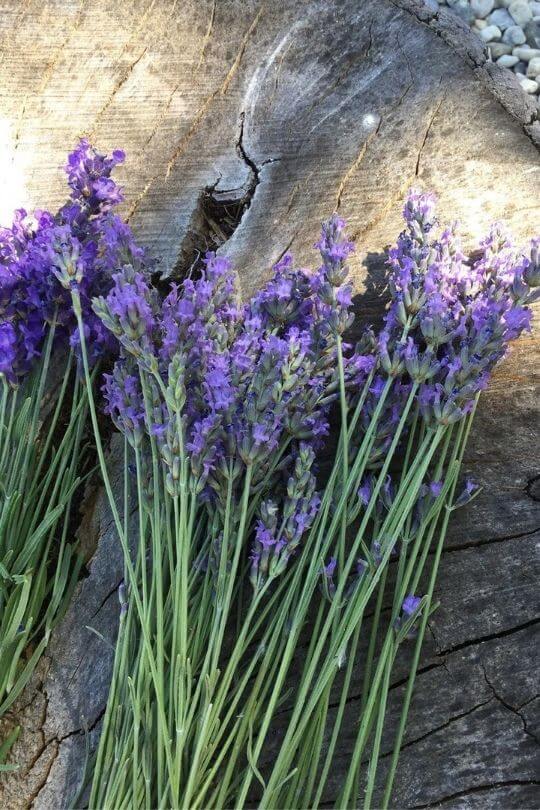
The spikes of this variety of English lavender have an upright habit and they can be 4 inches long (10 cm).
However, what makes ‘Royal Velvet’ stand out is its long lasting deep and dark navy blue to dark violet flowers, which also have a velvety texture.
‘Royal Velvet’ will fill borders, hedges, flower beds and containers with a depth of color and feeling, and a richness of scent like few other flowering plants can do.
9. French Lavender ‘Anouk’ (Lavandula stoechas ‘Anouk’)
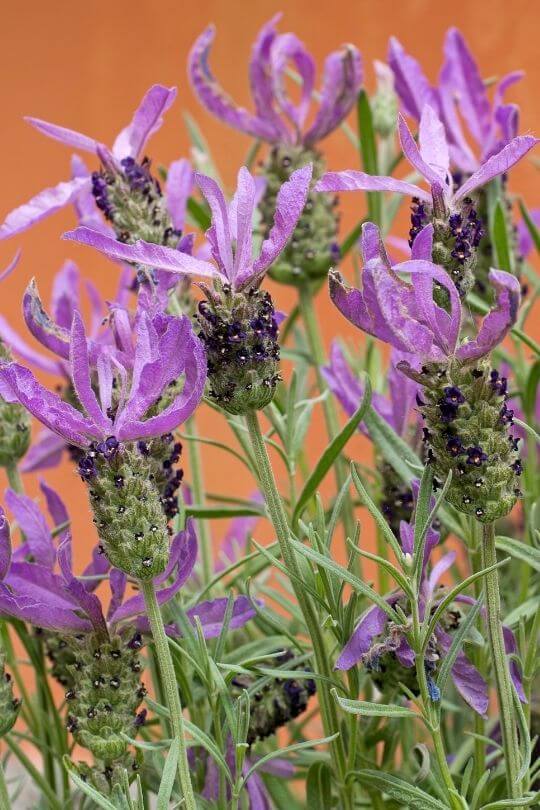
Of all the varieties of French lavender, ‘Anouk’ is (one of) the most showy, as it has very large ears at the top of inflorescences that really make it stand out.
They are of a bright and very beautiful shade of magenta, and they are big enough to see the veins in them.
The stems with the inflorescences have an upright habit, which makes the ears pop out of the foliage like rabbits peaking out of the grass, and the leaves too are aromatic.
It is a very persistent bloomer, perfect for borders, hedges, flower beds but also patios and terraces, and it looks even better when it attracts butterflies!
10. ‘Ballerina’ French lavender (Lavandula stoechas ‘Ballerina’)
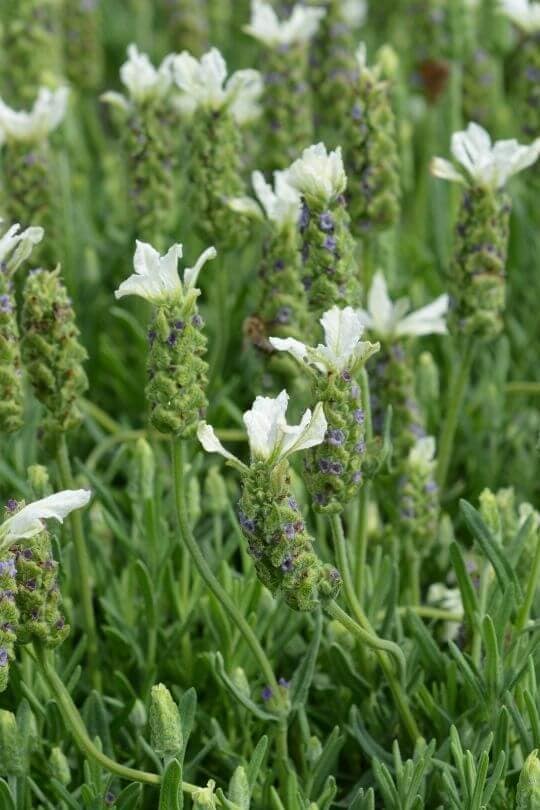
A very showy French lavender variety, ‘Ballerina’ too has upright stems, but they have short and rather plump spikes of deep violet purple flowers and big, elegant white ears on top!
This is the variety you want on your patio or terrace in containers if you wish to wow your guests with a very unusual, yet striking variety of lavender, though it will grow well also in rock gardens, borders and flower beds.
11. French Lavender ‘With Love’ (Lavandula stoechas ‘With Love’)
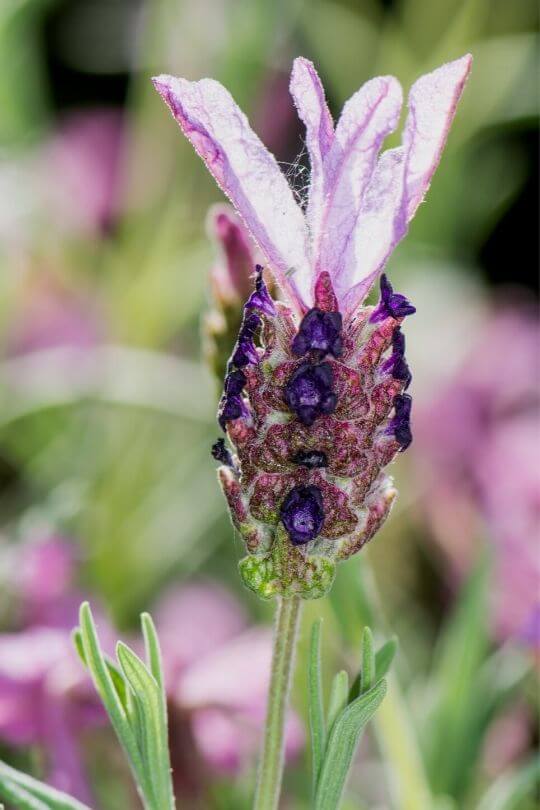
“Elegance” and “class” are the words that spring to mind when you see French lavender ‘With Love”, a beautiful variety with unusually green foliage, then plump and short spikes of a cerise-purple color and ears of the most delicate pink, almost white, with bright magenta veins in them.
12. ‘Regal Splendour’ French Lavender (Lavandula stoechas ‘Regal Splendour’)
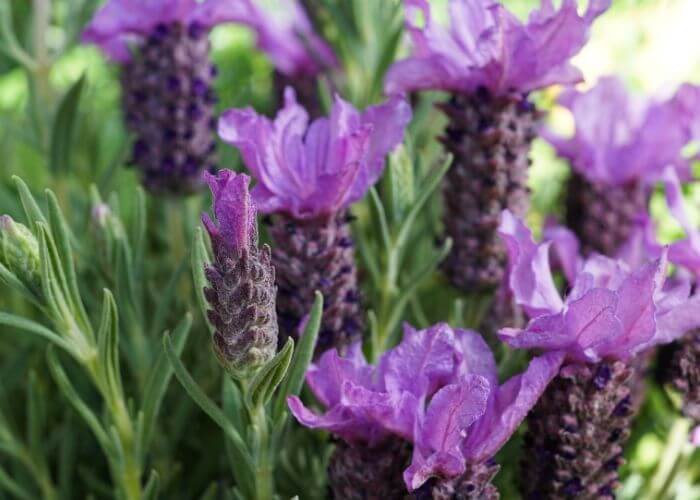
If you want to showcase the elegance of French lavender in pots or containers on your terrace or patio, or if you need a touch of royalty in your borders and hedges, then ‘Regal Splendour’ is what you are after!
13. ‘Pretty Polly’ French lavender (Lavandula stoechas ‘Pretty Polly’)
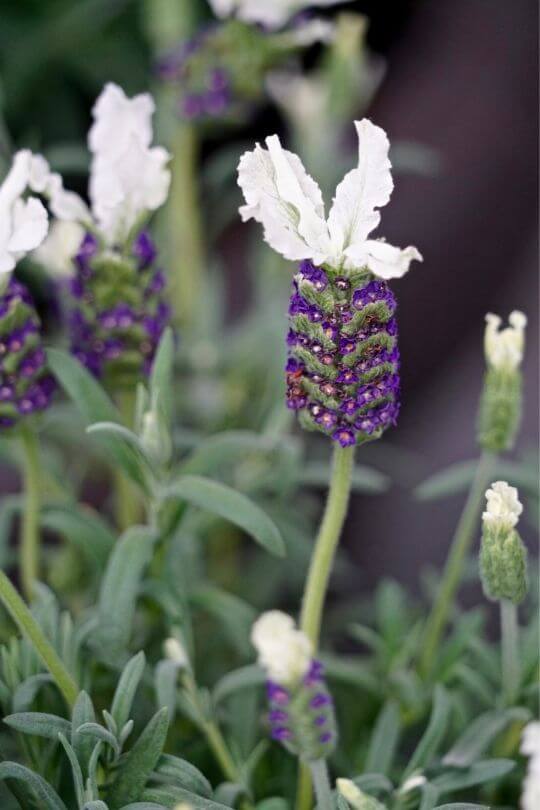
With long white ears on top of spikes with regularly spaced, deep purple flowers with a bright yellow center, ‘Pretty Polly’ has also won the Award of Garden Merit of the Royal Horticultural Society, and you can surely see the value of this very aromatic prize winner both in containers or in your borders or flower beds…
14. Butterfly Lavender ‘Papillon’ (Lavandula pedunculata subsp. pedunculata)
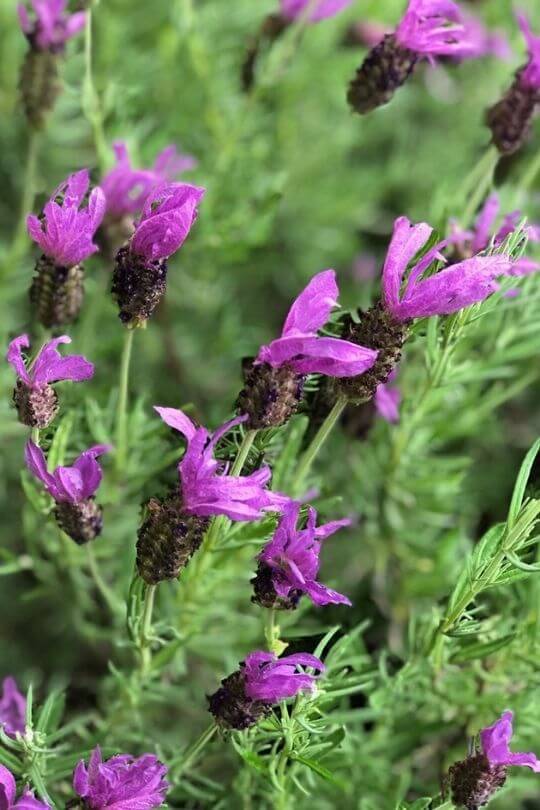
A lesser known species, not belonging to the classical Lavandula stoechas, it has something in common with French lavender, because it too has ears, or bracts, but…
They look very pointy and rebellious, unlike the larger ones of classical French lavender…
So, if you fancy a lavender plant that says, “I am different,” in a subtle way, the small purple spikes with unruly looking magenta ears on top may be what you have been looking for.
15. Fringed Lavender (Lavandula dentata)
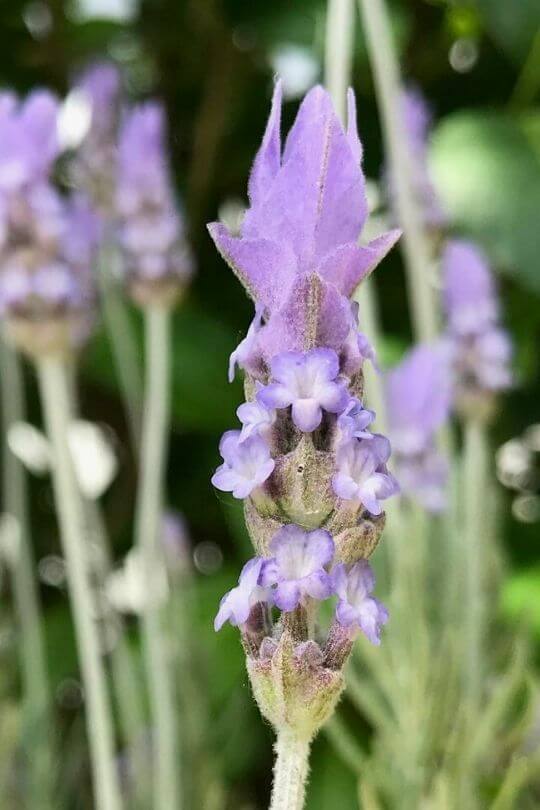
Although fringed lavender has a weak scent and flowers that are not particularly showy (still beautiful, with purple ears on top), it is much appreciated for the plastic and decorative ribbing (or teeth) of its silver green leaves.
16. Portuguese Lavender (Lavandula latifolia)
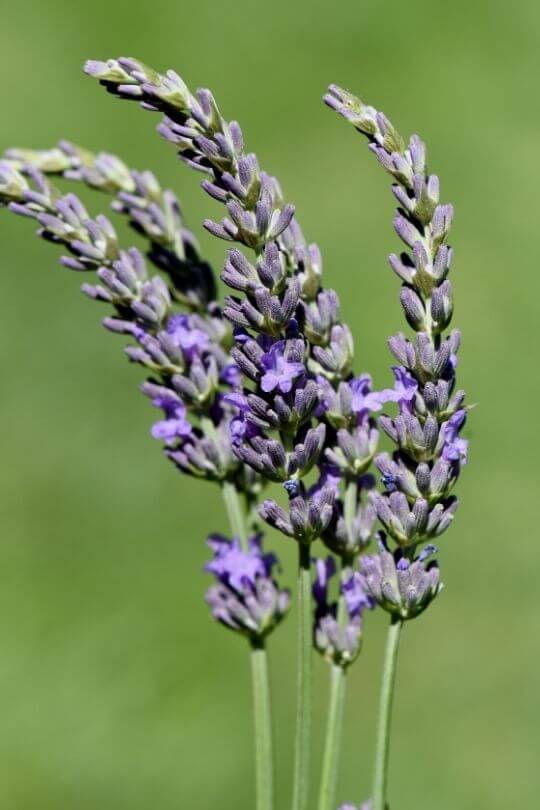
With typically purple flowers in regular spikes, the inflorescence of Portuguese lavender is very elegant if not showy individually. The shrubs, however, will form large clumps of silver green leaves with purple spikes growing upright in the middle, and arching on the sides.
17. ‘Provence Lavandin’ (Lavandula x intermedia ‘Provence’)
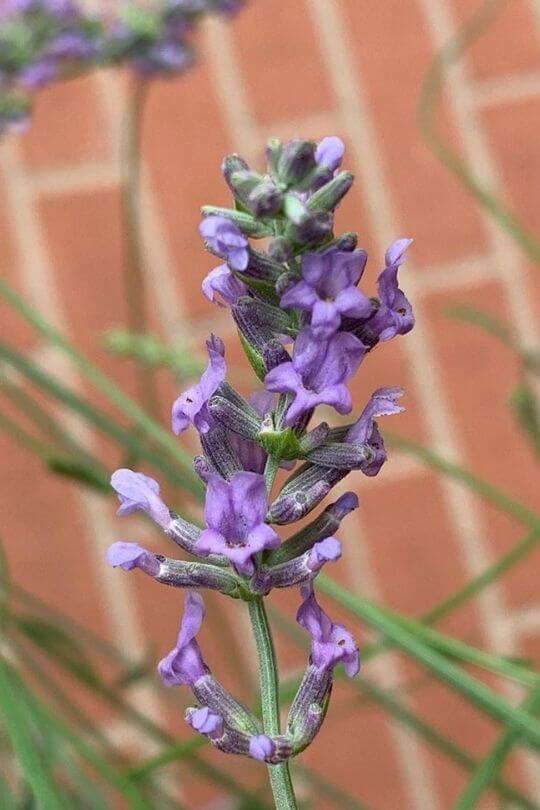
Provence is, in all the world, the region we most associate with lavender, so, what better name for a classical-looking variety than the name of this land?
The flower heads are quite big, 3 inches long (8 cm), and of a deep violet purple shade, and they loom stunning even when they are in bud.
If you do not live in a very dry region, ‘Provence’ may be your best choice, as it is well known for being the best variety for humid summers.
18. ‘Grosso’ Lavandin (Lavandula x intermedia ‘Grosso’)
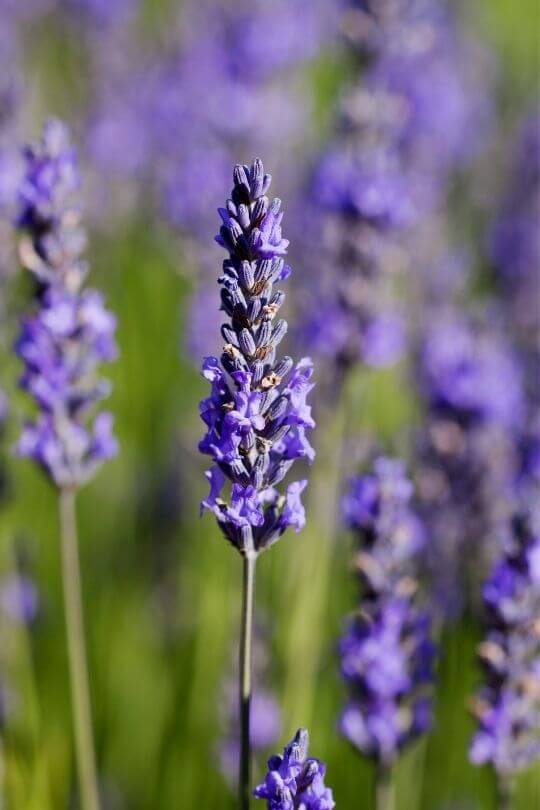
A wonderful plant to cover slopes very fast, as it os a fast and vigorous grower, lavandin ‘Grosso’ also has very long spikes of flower (6 inches long, or 15 cm) of that typical violet shade we associate with lavender.19. ‘Phenomenal’ Lavandin (Lavandula x intermedia ‘Phenomenal’)
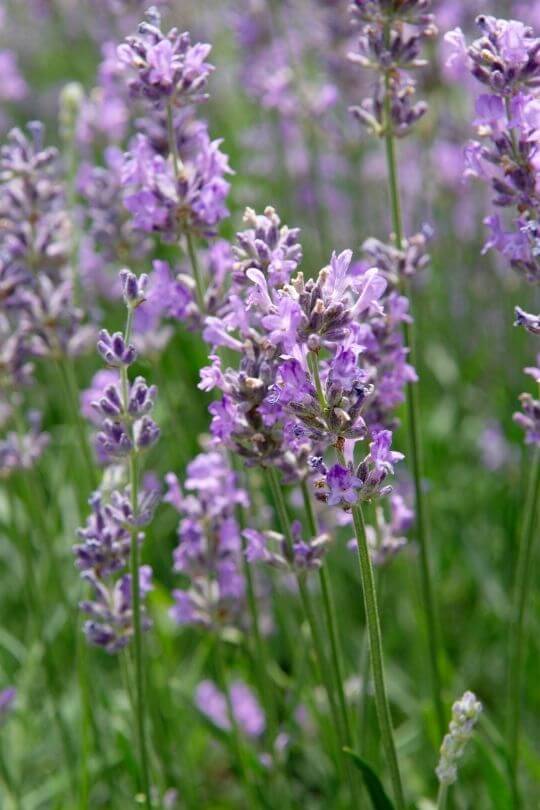
If you want a dense, rich and luxurious effect in your garden, have a look at ‘Phenomenal’ lavandin, which, on top of most fragrant lavender plant, will give you a deep vibrant violet purple hue and a thick shrub with many flower spikes.
20. ‘Hidcote Giant’ lavandin (Lavandula x intermedia ‘Hidcote Giant’)
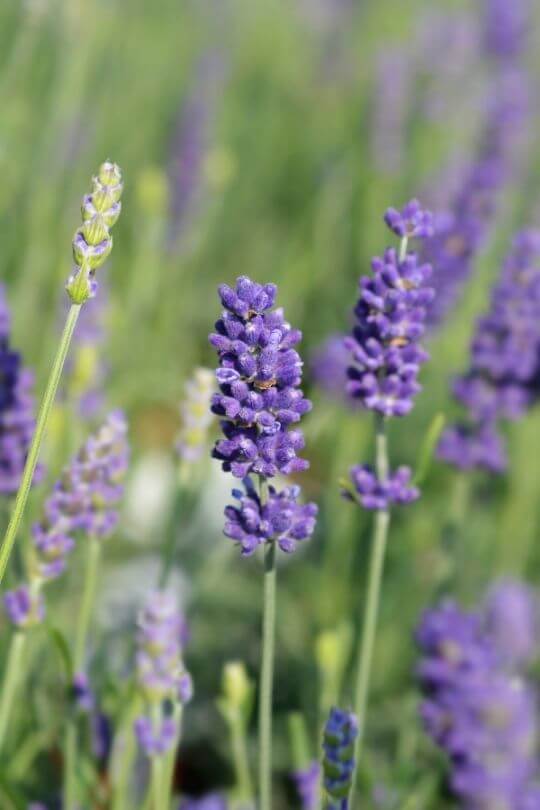
Unusual for a lavandin variety, ‘Hidcote Giant’ has a very big, plump and thick spike of magenta to violet purple flowers that can actually be showy individually.
